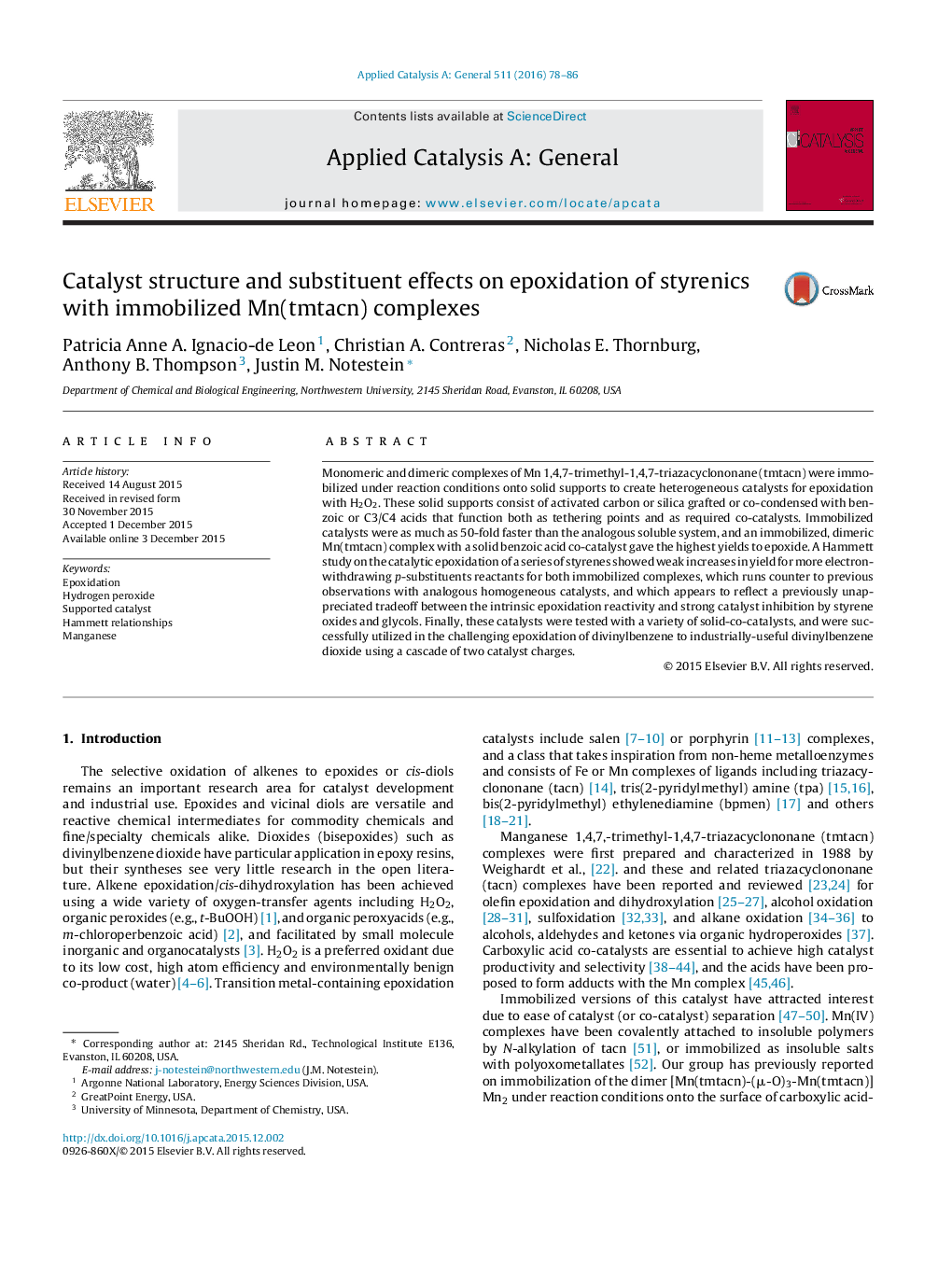| کد مقاله | کد نشریه | سال انتشار | مقاله انگلیسی | نسخه تمام متن |
|---|---|---|---|---|
| 38974 | 45799 | 2016 | 9 صفحه PDF | دانلود رایگان |

• Monomeric and dimeric manganese triazacyclononane complexes are immobilized onto, and activated by, solid carboxylates.
• Styrene epoxidation rates and yields depend on complex nuclearity and support, and can be 50-fold that of the homogeneous complex.
• Yields increase for e-withdrawing substituents, up to 100% yield and 1000 TON for cyanostyrene. This trend is counter to expectations and reflects inhibition by minor, ring-opening side products.
• Optimizing conditions allows up to 75% yield of challenging bis-epoxides from divinylbenzene.
Monomeric and dimeric complexes of Mn 1,4,7-trimethyl-1,4,7-triazacyclononane (tmtacn) were immobilized under reaction conditions onto solid supports to create heterogeneous catalysts for epoxidation with H2O2. These solid supports consist of activated carbon or silica grafted or co-condensed with benzoic or C3/C4 acids that function both as tethering points and as required co-catalysts. Immobilized catalysts were as much as 50-fold faster than the analogous soluble system, and an immobilized, dimeric Mn(tmtacn) complex with a solid benzoic acid co-catalyst gave the highest yields to epoxide. A Hammett study on the catalytic epoxidation of a series of styrenes showed weak increases in yield for more electron-withdrawing p-substituents reactants for both immobilized complexes, which runs counter to previous observations with analogous homogeneous catalysts, and which appears to reflect a previously unappreciated tradeoff between the intrinsic epoxidation reactivity and strong catalyst inhibition by styrene oxides and glycols. Finally, these catalysts were tested with a variety of solid-co-catalysts, and were successfully utilized in the challenging epoxidation of divinylbenzene to industrially-useful divinylbenzene dioxide using a cascade of two catalyst charges.
Figure optionsDownload high-quality image (155 K)Download as PowerPoint slide
Journal: Applied Catalysis A: General - Volume 511, 5 February 2016, Pages 78–86